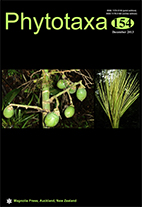Abstract
Magnolia sinostellata has been considered a synonym of Magnolia stellata by several taxonomists due to many shared morphological characters. With similar leaves and twigs, Magnolia amoena is distributed in areas near M. sinostellata. These three species were studied by comparing morphological, cytological and palynological characters, creating a maximum parsimony phylogenetic tree based on plastid DNA sequences and studying these taxa in the field. The results are as follows: M. sinostellata is a diploid, 2n=2x=38, and there are heterozygotes with paracentric inversion chromosomes in wild populations. Magnolia stellata is also a diploid, and there are heterozygotes with pericentric inversion chromosomes in wild populations. The abnormal chromosome behaviour in meiosis has serious effects on survival of the two species. Magnolia amoena is diploid with more or less normal meiosis except for a few lagging chromosomes in anaphase I and II. Magnolia stellata has a more complicated exine sculpture than the other two; exine structure is different in all three species. Separate species status for M. sinostellata is also supported by results of the plastid DNA phylogenetic study. Distributions, population descriptions and observations are provided, and based on all the evidence presented we conclude that M. sinostellata is a distinct species in M. subgenus Yulania.

